Chemicals industry roundup 2024
In 2020, the Covid-19 pandemic brought with it unstable market conditions for the chemicals industry, leading to weak demand, reduced production and lower revenues. Four years on, despite temporary rebounds in production and revenue, many of these challenges have persisted. Demand for chemicals declined once more, compounded by ongoing supply chain difficulties.
‘I would call these the trends of the 2020s,’ says Victoria Meyer, an industry expert and consultant, and founder and host of The Chemical Show podcast. ‘In the sense of, every year we think things are going to line out, and every year they don’t.’
Many chemical companies have responded by announcing cost-reduction programmes in 2023 and 2024, and margins were seen to rise in the first half of this year. However, the industry still faces considerable uncertainty which will likely continue into 2025 with a new president in the US and ongoing geopolitical pressures.
Shifting global economic landscape
The chemicals industry in Europe has continued to struggle this year, owing to a challenging combination of higher energy costs, slower growth, the ongoing effect of the Russia–Ukraine war on prices of natural gas and crude oil, and competition from lower-cost exports, leading to a wave of shutdowns and asset reviews.
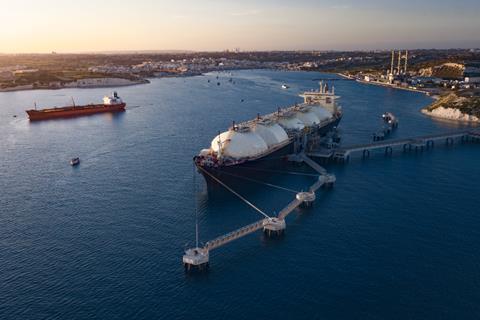
In April, Exxon Mobil and Sabic both announced plans to close ethylene plants in France and the Netherlands, respectively, while Shell and BP each revealed intentions to downscale refinery operations in Germany in 2025. BASF and LyondellBasell both launched reviews of their European operations this year.
‘[Europe is] getting hit on multiple fronts,’ explains Al Greenwood, a chemicals expert and deputy editor for the energy and chemicals consulting firm ICIS. ‘Unlike the US, which relies predominantly on ethane to produce ethylene, Europe is naphtha based – and we’ve seen what’s been going on with oil prices, especially after the Russian invasion [of Ukraine].
In addition, due to supply gluts elsewhere, European chemical producers are dealing with increased competitive pressure from newer, more efficient plants and refineries in the US, China and the Middle East.
The combination of sustainability, geopolitics and global economics has, quite frankly, bitten Europe in the ass
The quarterly report from German Association of the Chemicals Industry (VCI), released in November, highlighted that the hoped-for recovery in demand for chemical products in Germany and abroad had failed to materialise; the association now expects industry sales to decline by 2% for the year as a whole. ‘Our industry is in a severe recession,’ said VCI director-general Wolfgang Große Entrup. ‘Demand for chemical products continues to fall … capacity utilisation in our companies is getting lower and lower.’
‘The reality is, this whole combination of sustainability, geopolitics and global economics has, quite frankly, bitten Europe in the ass,’ says Meyer. ‘You could argue that this is a path that was going to happen anyway, and it was accelerated … especially when you look at where the demand centres are shifting. It’s been a hard half decade for the European chemical industry,’ she adds.
Europe is also facing stricter environmental regulations as it takes a harder approach on targets around plastics and circularity, but that too brings significant challenges.
‘The problem [is], you combine hard targets with an old industry with a lot of population in strong demand, and then you layer in the fact that China is just starting with full scale plants, it’s really hard to complete,’ says Meyer.
In the UK, growth has almost disappeared as companies battle rising labour costs, uncompetitive energy costs and weakening demand, putting jobs and future investment at risk. Figures released by the Chemical Industries Association (CIA) in October for quarter 3 trading showed reductions across the board; a contrast to earlier in the year when figures indicated a return to growth.
‘Earlier this year, almost half of chemical companies in the UK reported higher sales, production levels, and capacity utilisation. However, in our latest business survey that percentage has fallen to less than 25%, whilst 33% experienced a fall,’ said Steve Elliott, CIA’s chief executive.
‘The outlook is tough to say the least. This volatility of demand and lack of real recovery is making decision-making extremely challenging, especially with regard to longer-term investment,’ he added.

In the US, however, it has been a very different story; feedstock and energy costs have remained favourable which has helped US chemical producers enjoy an advantage in cost competitiveness over their European and Asian peers.
‘It’s been a down year for many chemical companies,’ says Meyer. ‘But the US is a bit more resilient because of the large demand base, because of the fundamental feedstock and energy structure, and, frankly, tempered regulations.
China saw chemical production grow by over 10% in 2023, and although growth has slowed this year, it remains strong. However, overcapacity remains the predominant issue for many Chinese chemical producers. This has resulted in flooded markets and reduced margins and has contributed to the plant shutdowns in Europe.
‘When all of these companies in China started building new chemical plants, they thought growth would be much higher than it is now,’ says Greenwood. ‘So we’ve seen a surge of exports from China, which has caused problems all over the world.’
In the coming years it is expected that China will continue to be the main driver of global demand growth for petrochemicals. ‘Early in my career, we used to talk about production and demand, being a third Europe, a third North America and a third Asia,’ says Meyer. ‘Today, China is [about] 50% of the chemical industry.’
Geopolitical upheaval
2024 has been a record year for elections – Latin America’s election ‘super-cycle’; two elections in France; the return of a Labour government in the UK after 14 years of Conservative rule to name but a few – it has been an eventful time for political change and the impact on the chemicals industry is yet to be seen.
‘It’s a whole layering of new regimes coming in place across the globe,’ says Meyer. ‘How that shakes out, that’s the dance that every politician and business executive is in.’
Perhaps the biggest political development for the chemicals industry is the imminent return of Donald Trump as US president. According to Greenwood, Trump’s re-election is something of a mixed bag for the chemical industry with tariffs and growing trade deficits on one hand and deregulation and reduced taxes on the other.
‘Trump has been very transparent that he wants to pursue tariffs and that is not good for the chemical industry for two reasons,’ says Greenwood.
Thanks to shale gas and shale oil, the US has an abundance of low-cost feedstock based on natural gas and can export ethylene derivatives at a cost advantage. However, if a country wants to impose retaliatory tariffs on the US, they can target the chemicals industry. ‘Especially since the world has a supply glut of chemicals – If you lock out the US, it’s a buffet – you just go somewhere else for whatever chemical you want,’ says Greenwood.
On the flip side, Greenwood continues, if tariffs are imposed on chemicals imported into the US, it’ll simply make things more expensive.
‘The big one is benzene – the US does have a deficit of benzene, so if Trump does impose across-the-board tariffs, that’s going to increase cost for benzene, and that’s going to trickle down the whole benzene chain,’ he says. Benzene is a byproduct of hydrocarbon refining and cracking, so domestic production is unlikely to increase independently.
However, in contrast, deregulation under Trump could assist the chemical industry; the Biden administration was characterised by a heavy regulatory hand, with many of the regulations increasing costs without much benefit, according to Greenwood.
‘Any relief on the regulatory side, is going to benefit chemicals,’ he adds. ‘The other plus is lower taxes.’ Trump is expected to extend existing tax cuts and lower additional taxes, he explains. The bad part is the prospect of growing government budget deficits, leading to overall economic slowdown. Most economists expect the deficit will increase, and that’s going to cause problems with longer term interest rates.’
Supply chain disruptions
The ongoing disruption of shipping routes in the Red Sea and Suez canal since late 2023 –caused by attacks by Houthis in Yemen – is continuing to have repercussions for chemical industry supply chains, particularly in Europe and Asia. The resulting route diversions around the southern tip of Africa have had significant time and cost implications, with journeys now taking between 10 days and four weeks of extra travel time.
In the US, shipping was further constrained this year by a prolonged drought in the Panama canal, the result of reduced rainfall caused by El Niño, which limited the number of vessels passing through; the Panama Canal Authority reported a 21% reduction in deep-draft transits the 2024 fiscal year, compared to 2023. With the risk of drought likely to continue with climate change, the authority has said it plans to create a huge dam by 2031 to secure freshwater for its locks.
Trade and supply chains have also been disrupted by port strikes affecting North America in the latter half of this year. In October, a three-day strike on the East and Gulf Coast of the US halted container traffic, as did strikes in October and November at Canada’s largest ports, including Vancouver, Prince Rupert and Montreal.
‘With tariffs and other things in place, it’s created a really disruptive environment,’ says Meyer. ‘It’s taking 50% longer, in many cases, sometimes twice as long, to move product from point A to point B.’
Another layer on top of the disruptions is the emissions trading system, in the EU and the UK, both of which have been extended this year to include the maritime sector. ‘All of these things make it more challenging for the marine industry, which then makes it more challenging for the chemical industry, and has a knock-on effect on costs, timing, viability, etc,’ Meyer explains.
Decarbonisation
There is growing demand for sustainable solutions across the industry, providing companies with the opportunity to gain market share. The surge in production of electric vehicles has increased demand for high-performance plastics and supplies for battery materials. However, the drive for sustainability will create challenges for the sector too, as companies face major investments in decarbonisation and increasing pressure from stakeholders.
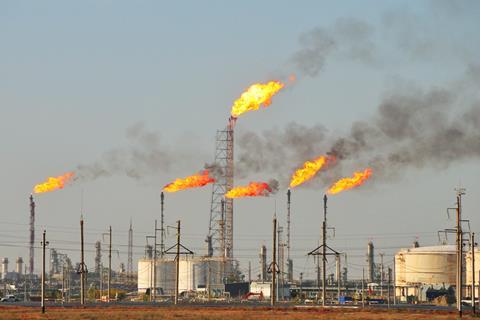
There have been several ‘green retreats’ from major oil companies over the past year. In October, BP abandoned its target to cut oil and gas production by 2023 in favour of targeting several new investments in the Middle East and the Gulf of Mexico.
Earlier this year, Shell said it would slow the pace of its emissions reductions for this decade, citing a growing demand for energy. In July it was revealed that the company had quietly backed away from a pledge to rapidly increase its use of ‘advanced’ (or chemical) recycling of plastic in its 2023 sustainability report, published in March, in which it admitted that the plan was ‘unfeasible due to lack of available plastic waste feedstock, slow technology development and regulatory uncertainty’.
Carbon Tracker’s latest research on the sector’s emission reduction targets shows progress has stalled. It found that no companies were aligned with the Paris goal of limiting global warming to below 2°C or setting targets to cut methane emissions from all of their activities.
Over the past year, experts have highlighted the slow progress of carbon capture and storage (CCS) in the UK and Europe. In October the UK government confirmed almost £22 billion of funding to kickstart CCS projects to support the UK’s goal to store 20–30 million tonnes of carbon dioxide by 2030. While this has enabled final contract agreement for the Net Zero Teesside Power project, there’s little clarity on the pipeline of future projects that would fill the storage sites. There are also questions in the EU, about the pace of projects to achieve its 2030 target of storing 50 million tonnes a year by 2030
Meanwhile, in December, in what was supposed to be the final round of negotiations for a global treaty to end plastic pollution – which was hoped to include commitments to reducing production of virgin plastics and banning particularly hazardous classes of chemicals from use in plastic manufacture – delegates from over 170 countries failed to reach a binding agreement. The talks will now continue into 2025.







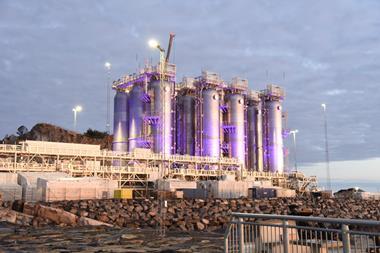
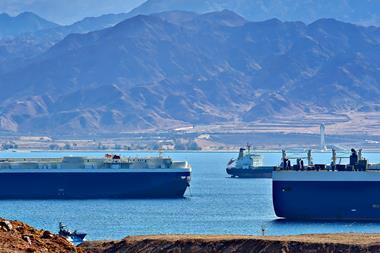
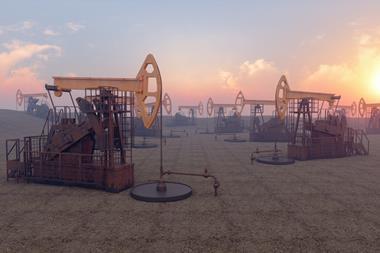




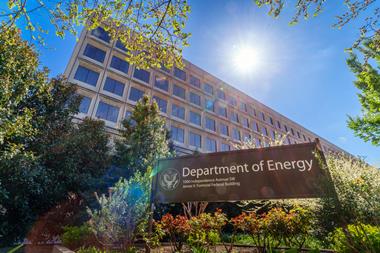


No comments yet